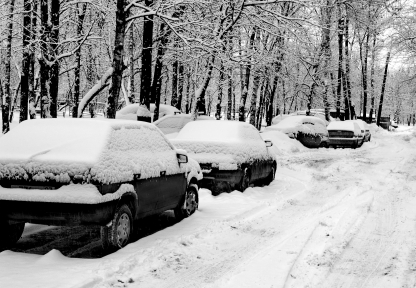This week, the arctic blast that brought record low temperatures to Canada and the United States has finally begun to ease its grip, with meteorologists predicting above-freezing temperatures by the weekend.
Minneapolis-St. Paul, Minn., spent 62 consecutive hours below zero. Chicago spent 37 hours below that threshold, including 29 hours in double digits below zero, according to The Weather Channel.
In fact, all 50 states – including Hawaii – dipped below 32 degrees at some point Tuesday.
Meteorologist across the United States said a “polar vortex” is to blame for the below-freezing temperatures.
While the scientific definition of a polar vortex may be difficult for the average person to understand, it is often compared to as a hurricane with freezing polar winds, circling the Arctic at more than 100 miles per hour.
According to NBC news weatherman Al Roker, you can “think of it as a polar hurricane.”
As the vortex starts to weaken, it can send frigid temperatures south, normally to northern Canada or Alaska. But this week a weaker polar vortex sent cold air even farther south – putting millions of Americans and Canadians into a deep freeze.
The good news is that this abnormality was short-lived but, unfortunately, left both Canada and the United States with a relatively large mess to clean up.
According to FlightAware, roughly 14,000 flights were cancelled this week, leaving people stranded far from home. Amtrak – especially along the Northeast corridor – saw significant delays adding additional stress to people trying to get home.
At least 17 deaths were blamed on the severe weather since snow and bitter cold started punishing the Midwest late last week, according to counts by NBC News, NBC Stations and The Weather Channel.
In addition to travel delays, homeowners across all of North America felt the impact of this recent extreme weather event.
Pipes froze. Driveways and walkways quickly became a safety hazard. Roads closed to help prevent traffic accidents. People were snowed in. Schools and businesses up north closed. And almost all public transportation services faced significant delays.
Now as temperatures begin to rise, pipes that were once frozen and even cracked are unfreezing, which could add additional damages to one’s home. Plumbers, repairman and even rescue workers are a high demand as people are trying to recover.
This is also placing additional strain on insurance companies, as claims are increasing daily.
“Extreme weather is hitting the United States with a vengeance and it poses a growing threat to the insurance industry and vast segments of society that rely on insurance for peace of mind and financial security,” quoted Mike Kreidler, Washington Insurance Commissioner, in the Stormy Future for U.S. Property/Casualty Insurers report.
Experts say that as insurance companies are forced to pay out more policies to cover storm damages, there are likely to be increases in premiums and changes to the way insurance is sold, according to a MSN article.
Even though the storm has past, American and Canadian homeowners may be facing aftermath complications – such as busted pipes, broken furnaces, weather-related damages to their home, and even higher insurance premiums.













